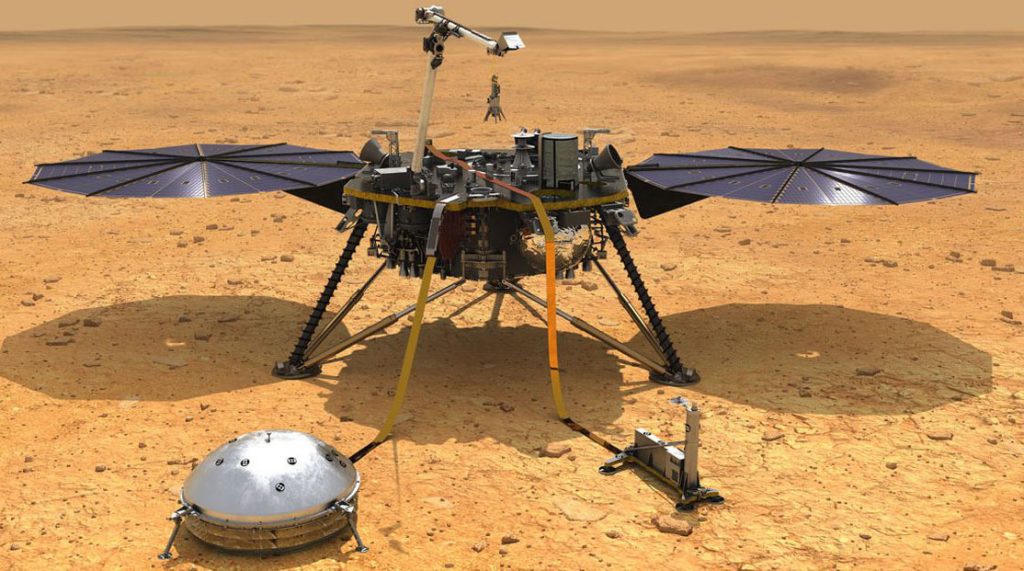Washington: NASA’s robotic Mars ‘InSight lander’ has recorded a likely ‘Marsquake’ for the first time ever, the US space agency said Wednesday. The faint seismic signal, detected by the lander’s ‘Seismic Experiment for Interior Structure (SEIS)’ instrument, was recorded April 6, the lander’s 128th Martian day.
This is the first recorded trembling that appears to have come from inside the planet, as opposed to being caused by forces above the surface, such as wind, NASA said in a statement. Scientists still are examining the data to determine the exact cause of the signal.
“InSight’s first readings carry on the science that began with NASA’s Apollo missions,” said InSight Principal Investigator Bruce Banerdt of NASA’s Jet Propulsion Laboratory (JPL) here. “We’ve been collecting background noise up until now, but this first event officially kicks off a new field: Martian seismology!” Banerdt added.
The new seismic event was too small to provide solid data on the Martian interior, which is one of InSight’s main objectives. The Martian surface is extremely quiet, allowing SEIS to pick up even faint rumbles.
In contrast, Earth’s surface is quivering constantly from seismic noise created by oceans and weather. An event of this size in Southern California would be lost among dozens of tiny crackles that occur every day.
It should be stated here that NASA’s Apollo astronauts had installed five seismometers that measured thousands of quakes while operating on the Moon between 1969 and 1977, revealing seismic activity on the Moon.
Different materials can change the speed of seismic waves or reflect them, allowing scientists to use these waves to learn about the interior of the Moon and model its formation.
